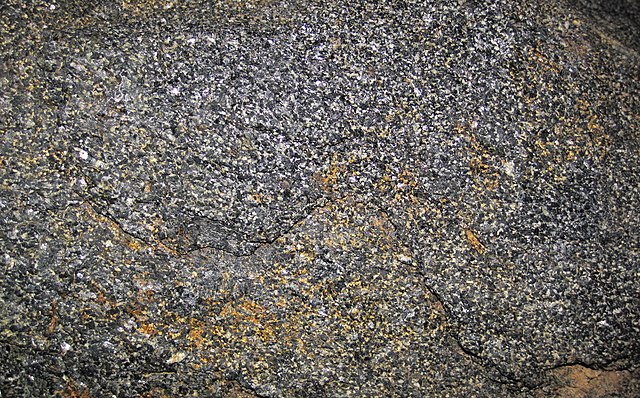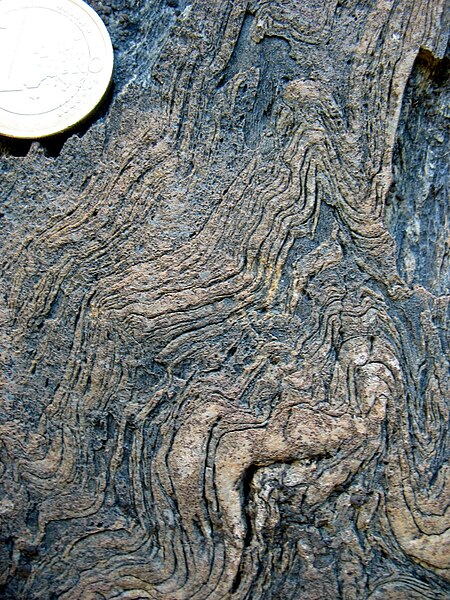Hydrothermal circulation in its most general sense is the circulation of hot water. Hydrothermal circulation occurs most often in the vicinity of sources of heat within the Earth's crust. In general, this occurs near volcanic activity, but can occur in the shallow to mid crust along deeply penetrating fault irregularities or in the deep crust related to the intrusion of granite, or as the result of orogeny or metamorphism. Hydrothermal circulation often results in hydrothermal mineral deposits.
Taal Volcano Main Crater Lake, where hydrothermal circulating convection cells exist
Metamorphism is the transformation of existing rock to rock with a different mineral composition or texture. Metamorphism takes place at temperatures in excess of 150 °C (300 °F), and often also at elevated pressure or in the presence of chemically active fluids, but the rock remains mostly solid during the transformation. Metamorphism is distinct from weathering or diagenesis, which are changes that take place at or just beneath Earth's surface.
A cross-polarized thin section image of a garnet-mica-schist from Salangen, Norway showing the strong strain fabric of schists. The black crystal is garnet, the pink-orange-yellow colored strands are muscovite mica, and the brown crystals are biotite mica. The grey and white crystals are quartz and (limited) feldspar.
Amphibolite formed by metamorphism of basalt showing coarse texture
A mylonite (through a petrographic microscope)
A metamorphic rock, deformed during the Variscan orogeny, at Vall de Cardós, Lérida, Spain





